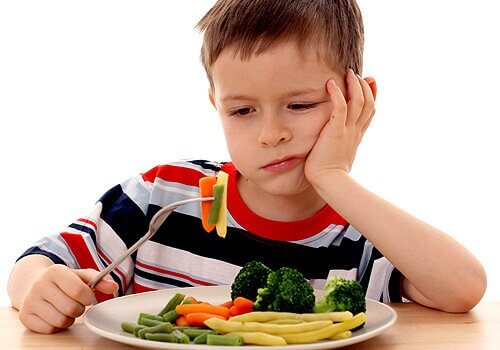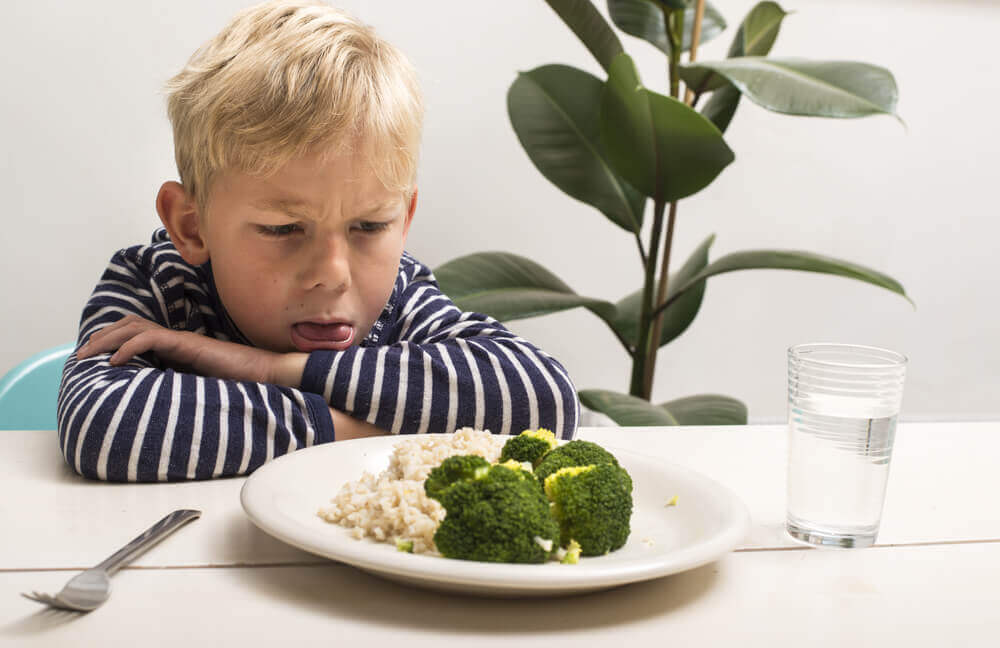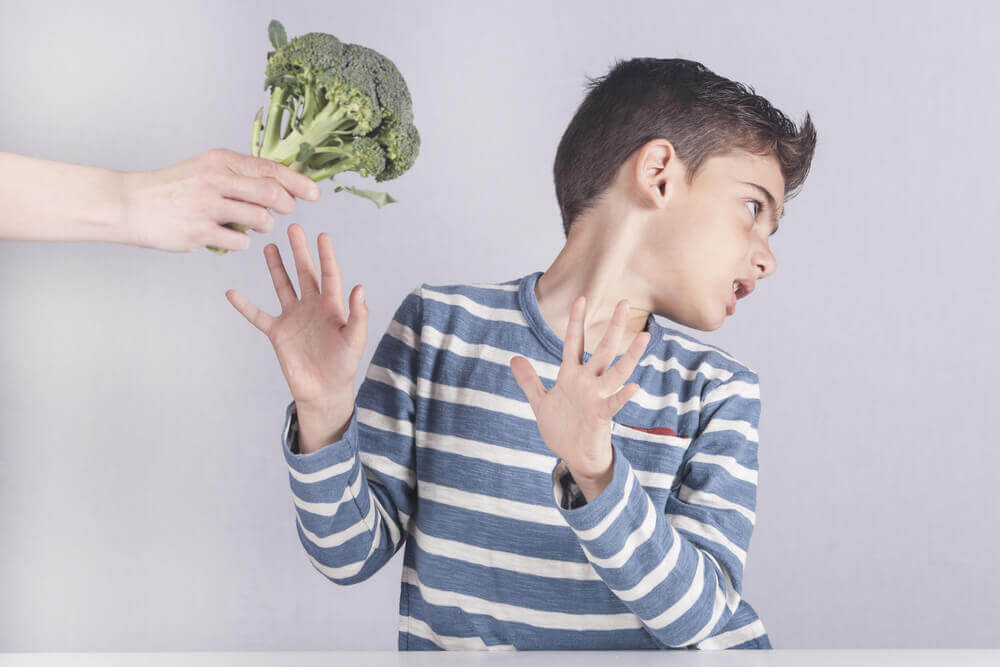What to Do for Children Who Refuse to Eat Vegetables

Children who refuse to eat vegetables abound in the world. Their reactions to these foods are almost universal: twist their nose, turn their head, frown or dig into the dish until they find something attractive to their palate.
Some parents see these behaviors as signs that they are spoiled, but that is just the way it is. There are organic factors that trigger them, there are even causes of evolutionary origin. Contrary to what we believe, this rejection is more linked to the color of vegetables, than to the taste.
Brain defense mechanisms

The brain is the result of a transformation of thousands of years, and still has defense mechanisms to protect living beings from contaminated and poisonous agents. This explains why some bright-hued foods, such as vegetables, ignite danger alarms in the brain, instinctively triggering an aversion to them.
In terms of colors, green and orange nuances within meals lead to denial in young children. This is why many children between three and five years old get to know a potato more quickly than broccoli or brussels sprouts.
Although these actions are part of the natural growth process in a child, it is the parents’ responsibility to promote the gradual incorporation of these foods that represent the greatest source of fiber, minerals and vitamins.
High sensitivity

It has been demonstrated that sensitivity to flavors has an important genetic component. The gustatory and olfactory perception is very developed in the first years of life, which is why many children show difficulty in tolerating foods other than breast milk or formulas.
To that, we must add the low level of calories that vegetables have, and that bitter taste that characterizes most of them. All this will begin the so-called alimentary neophobia (instinctive rejection of food).
It is the loss of receptors or their inability to transform gustatory and olfactory stimuli into nerve signals, which causes that sensitivity to subside with the passage of time.
Try Delicious Options

Children who reject vegetables tend to underestimate dark leafy vegetables, such as Swiss chard, eggplant, spinach, cucumbers, and radishes. They tolerate a bit better sweet potatoes, ripe tomatoes, and those with greater sweetness.
The positive of all this, is that just as the brain is prepared to exclude everything that may represent a threat, it is also capable of changing through experience or frequent exposure to certain habits.
Therefore, experts say that to overcome the “contempt” of vegetables, you should urge the child to taste exquisite dishes that contain the same taste between 12 and 14 times. Only then, will the brain rule out the risks of toxicity.
How to deal with children who reject vegetables

The worst mistake that adults can make is to foment the repudiation of food. Children who reject vegetables will grow deprived of a good proportion of potassium, sodium, magnesium, calcium and vitamin K.
In addition, they will receive few amounts of antioxidants and vitamin A, which guarantee good health of their skin, tissues and mucous membranes. Likewise, they will provide their organism with insufficient doses of carbohydrates, essential for the prevention of intestinal affections and constipation.
Each child has their own style of feeding and although they will not die of hunger, it is necessary to correct this rejection of vegetables.
Tips to consider
- Preaching by example, trying to eat with the family.
- Do not incorporate new foods so often. The ideal frequency is every two days.
- Consider that variety and colors do not help. The convenient thing is to provide one vegetable at a time, at least in the first stage.
- Do not force them to eat large portions. Starting with small bites is the most convenient.
- Vary the elaborations. If they do not tolerate the vegetable by itself, you can add it in a recipe that is to their liking. Juices and pastries are not the best options.
- Cut into small pieces. The sensation of being able to eat food with their hands will attract their attention.
- Avoid pressure, punishments and threats.
- Add vegetables always, after three years of age, and accustom them to trying it.
- Take advantage of the appetite. If they are hungry it’s very possible they will eat it.
- Maintain patience and serenity, always with positive reinforcement instead of arguments.
- Appeal to verbal rewards. Phrases like “Good job”, “Look at how much you are growing”, can motivate you.
- Do not introduce food early and abruptly.
These suggestions usually give good results. They may not apply to all vegetables, but it is unlikely that the child will like all species; three or four may be enough to start.
It must be remembered that every process takes time, and far from rewarding or judging it, the child should be taught that they should eat healthy on their own initiative and well-being.
This text is provided for informational purposes only and does not replace consultation with a professional. If in doubt, consult your specialist.








